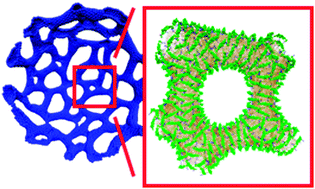We present a method for “inverse coarse graining,” rebuilding a higher resolution model from a lower resolution one, in order to rebuild protein coats for remodeled membranes of complex topology. The specific case of membrane remodeling by N-BAR domain containing proteins is considered here, although the overall method is general and thus applicable to other membrane remodeling phenomena. Our approach begins with a previously developed, discretized mesoscopic continuum membrane model (EM2) which has been shown to capture the reticulated membrane topologies often observed for N-BAR/liposome systems by electron microscopy (EM). The information in the EM2 model—directions of the local curvatures and a low resolution sample of the membrane surface—is then used to construct a coarse-grained (CG) system with one site per lipid and 26 sites per protein. We demonstrate the approach on pieces of EM2 structures with three different topologies that have been observed by EM: A tubule, a “Y” junction, and a torus. We show that the approach leads to structures that are stable under subsequent constant temperature CG simulation, and end by considering the future application of the methodology as a hybrid approach that combines experimental information with computer modeling.

You have access to this article
 Please wait while we load your content...
Something went wrong. Try again?
Please wait while we load your content...
Something went wrong. Try again?


 Please wait while we load your content...
Please wait while we load your content...